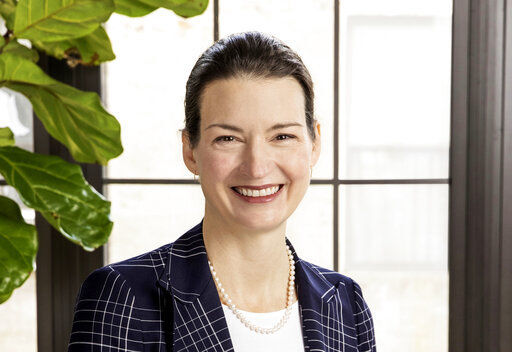Blue Apron was struggling at the start of 2020. The meal kit company was trying to boost sales with new options like premium meals, but it was also considering putting itself up for sale.
Then the pandemic happened. Almost overnight, New York-based Blue Apron gained thousands of customers as restaurants closed and people tried to limit grocery trips.
President and CEO Linda Findley said Blue Apron could have tried to further inflate its customer base during that period. But she stuck to the company’s turnaround plan, adding even more options like premade meals, wellness-focused recipes and add-ons like desserts. The company has tried to cut prep times; most of its meals can now be made in 35 minutes or less.
“I said multiple times, ‘It’s a pandemic, not a business model,’” Findley said. “I didn’t want to drive growth off this difficult situation. I was really looking to stay the course and build sustainable growth.”
So far, Findley’s strategy is working. Blue Apron’s customer base has fallen from its early pandemic highs, but those who remain are ordering more and spending more per order.
Findley joined Blue Apron in 2019 from Etsy, where she was chief operating officer. She has also led operations at Evernote and was head of global marketing for Chinese e-commerce giant Alibaba.com.
Findley discussed Blue Apron with The Associated Press. Answers have been edited for length.
Q: Who is the typical Blue Apron customer?
A: We do tend to see a lot of two-income couples or dual-income couples with very young kids. We also see a rise in singles using meal kits and empty nesters. We have a very wide swath of the U.S., in metro areas but also in rural areas, for every different reasons. So if you’re in Manhattan, like I am, and you have a tiny kitchen, then you don’t have to keep a bunch of food around. But if you live in the middle of rural North Carolina, where I grew up, you might have plenty of room but your grocery store might be 20 minutes away and it’s probably only going to have part of what you’re looking for anyway.
Q: What keeps potential customers from trying meal kits?
A: I think that early on, the assumption was that meal kits were really just about convenience. And when you think about that, there’s a little bit of a negative connotation of, “I’m too lazy to go to the grocery store.” And the pandemic did change that, because as people started trying meal kits, all of a sudden the entire industry started growing. They started saying, “Oh, I get it now. It isn’t about, ‘I’m too lazy to go to the grocery store. It is actually about getting better quality, better value, more variety, healthier options.'” All of those things can come through meal kits. And it changes the dynamic of a food consumption. You know, 40% of food in the United States gets thrown out on a regular basis; the direct-to-consumer model helps eliminate a lot of that.
Q: How has Blue Apron dealt with rising food costs?
A: It’s not been as bad as it has been in other industries. We are a direct supply company, so 80% of what we put into a box comes directly from producers. So that means we’re reducing the middleman. Logistics has actually been one of the most challenging things for us. Not even the last mile —— the last mile we’ve been able to manage with FedEx and others. It’s been the line hauls and the supplier side of logistics. So for that reason, we actually did change our pricing structure back in the fall to add a shipping charge.
Q: You’ve had a really varied career. What is the thread that ties those jobs together?
A: One of the most important things is really, really focusing on the customer and making sure that you’re thinking about customer needs first. Etsy very aggressively said, “OK, what is a shopper looking for and how do we make it easier for them to sort through these tens of thousands of products that that change constantly?” It was that shift to a rabid focus on the on the buyer that made such a big impact there. And frankly, here as well. So that’s number one. Number two is a constant focus on making sure you’re executing against what you said you’re going to do. You can’t sit around and just think all day of great ideas. You actually need to drive them to reality. And then, for me, I’ve always seen the greatest opportunities in risk. I just think taking something on that has an opportunity to grow significantly or has a gap between brand and execution is one of the most rewarding things you can do.


